7.6 /10 1 Votes
8/10 TV No. of episodes 110 Original network ABC | 7.3/10 IMDb Created by Irwin Allen No. of seasons 4 First episode date 14 September 1964 Program creator Irwin Allen | |||||||||||||||||||||||||||||||||
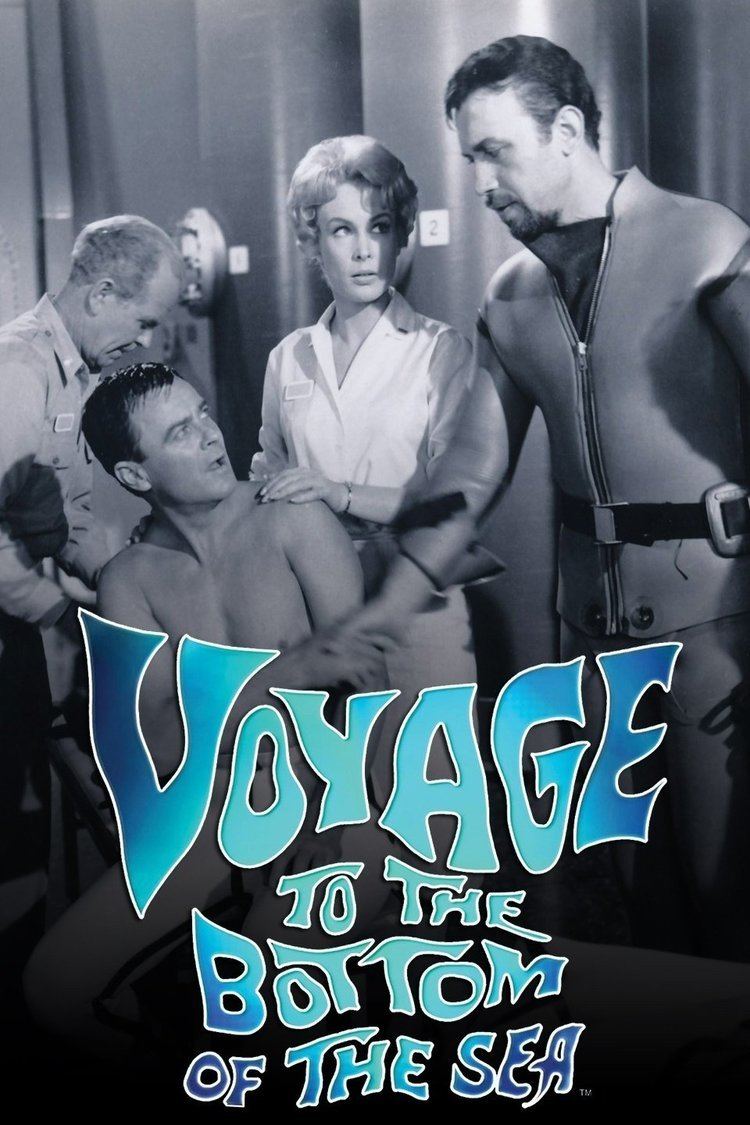 | ||||||||||||||||||||||||||||||||||
Starring Richard BasehartDavid HedisonBob DowdellDerrik LewisHenry KulkyTerry BeckerDel MonroeArch WhitingPaul TrinkaAllan HuntRichard BullPaul Carr Composer(s) Paul SawtellHugo FriedhoferAlexander CourageMorton StevensMichael Hennagin (one episode)Jerry Goldsmith (one episode)Leith StevensLennie HaytonNelson Riddle (one episode)Herman Stein (one episode)Robert Drasnin (one episode)Harry GellerJoseph MullendoreIrving Gertz (one episode) Cast Richard Basehart, David Hedison, Del Monroe, Terry Becker, Henry Kulky Profiles | ||||||||||||||||||||||||||||||||||
Voyage to the Bottom of the Sea is a 1960s American science fiction television series based on the 1961 film of the same name. Both were created by Irwin Allen, which enabled the movie's sets, costumes, props, special effects models, and sometimes footage, to be used in the production of the television series. Voyage to the Bottom of the Sea was the first of Irwin Allen's four science fiction television series, as well as the longest-running. The show's main theme was underwater adventure.
Contents
- Voyage to the bottom of the sea 1964 1968 theme and snippets hd dolby
- Pilot episode
- Season One
- Season Two
- Season Three
- Fourth and final season
- Music
- Cast
- Episode list
- Other media
- Popular culture
- DVD releases
- References

Voyage was broadcast on ABC from September 14, 1964, to March 31, 1968, and was the decade's longest-running American science fiction television series with continuing characters. The 110 episodes produced included 32 shot in black-and-white (1964–1965), and 78 filmed in color (1965–1968). The first two seasons took place in the then future of the 1970s. The final two seasons took place in the 1980s. The show starred Richard Basehart and David Hedison.
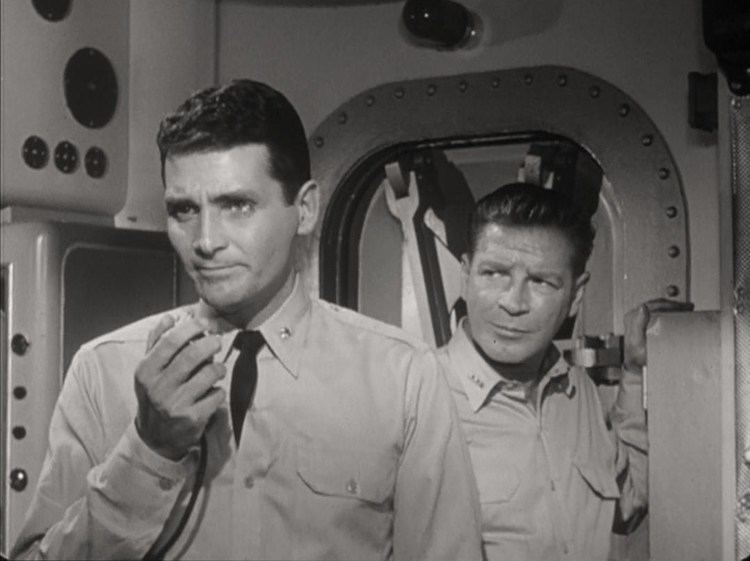
Voyage to the bottom of the sea 1964 1968 theme and snippets hd dolby
Pilot episode
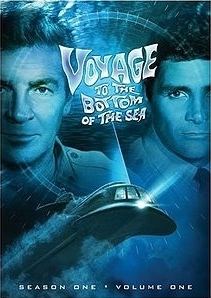
The pilot episode "Eleven Days to Zero" was filmed in color but shown in black-and-white. It introduces the audience to the futuristic nuclear submarine S.S.R.N. Seaview and the lead members of her crew, including the designer and builder of the submarine Admiral Harriman Nelson (Richard Basehart), and Commander Lee Crane (David Hedison), who becomes the Seaview's captain after the murder of her original commanding officer. The submarine is based at the Nelson Institute of Marine Research (NIMR) in Santa Barbara, California, and is often moored some 500 feet below NIMR in a secret underground submarine pen carved out of solid rock. The Seaview is officially for undersea marine research and visits many exotic locations in the Seven Seas, but its secret mission is to defend the planet from all world and extraterrestrial threats in the then-future of the 1970s.
Season One
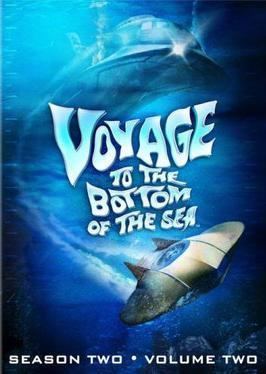
The first season of 32 episodes began with Admiral Nelson and the crew of the Seaview fighting against a foreign government to prevent a world-threatening earthquake, and continuing with a foreign government destroying American submarines with new technologies in The Fear Makers and The Enemies. The season also had several ocean peril stories in which the Seaview crew spent the episode dealing with the normal perils of the sea. Two examples are "Submarine Sunk Here" and "The Ghost of Moby Dick". The season introduced the diving bell and a mini-submarine, as well as the first alien story (Don Brinkley's; 'The Sky is Falling') and the first sea monsters. The season ended with the Seaview crew fighting a foreign government to save a defense weapon.

In the first season, the gritty, atmospheric, and intense series featured story lines devoted to Cold War themes, as well as excursions into near-future speculative fiction. Many episodes involved espionage and sci-fi elements. While aliens and sea monsters, not to mention dinosaurs, did become the subject of episodes, the primary villains were hostile foreign governments. While fantastic, the scripts had a semblance of reality.

During the course of the first season Admiral Nelson was promoted from Three Star to a Four Star Admiral, and it was established that while essentially a marine research vessel SSRN Seaview was also part of the U.S. nuclear armed fleet (most notably defined in William Read Woodfield's episode; Doomsday).
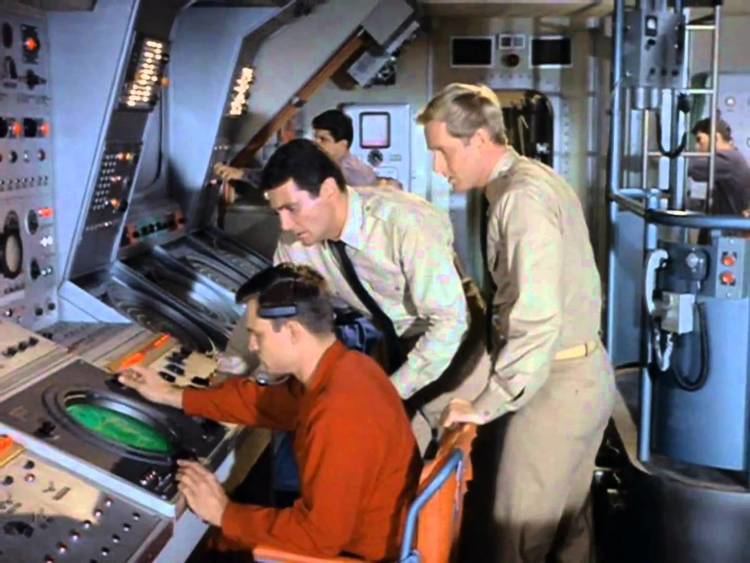
The first season opening credits depicted Seaview rising towards the surface, and the closing credits played out over a still of the Seaview's spectacular arctic surface, as featured at the start of the 1961 film.
Season Two
The second season began with a trip inside a whale, a trip inside a volcano, and a few Cold War intrigue and nuclear war-themed episodes, and saw several brushes with world disaster. The season ended with a ghost story, one of the show's few sequels.
Due to ABC's demands for a somewhat "lighter" tone to the series, the second season saw an increase in monster-of-the-week type plots, yet there were still some episodes that harkened back to the tone of the first season. The second season also saw a change from black-and-white to color. The beginning of the second season saw the permanent replacement of Chief "Curly" Jones with Chief Francis Ethelbert Sharkey, due to the death of Henry Kulky, who portrayed Chief Jones.
The most important change in the series occurred during this season when a notably redesigned Seaview interior was introduced, along with the Flying Sub, a yellow, two-man mini-submarine with passenger capacity, armed with a laser gun. It could leave the ocean and function as an airplane. The Flying Sub was referred to by the initials FS-1. The futuristic craft greatly increased the Seaview crew's travel options. The Flying Sub was launched from a bay with automatic doors added in the lower part of the bow section of Seaview that was apparently built between Seasons One and Two (though stock color footage from the 1961 film that was used in Season Two occasionally showed a Seaview minus this addition, despite it being present in later color footage included in the same episodes). The Seaview's private observation deck from the first season was never seen again. The ship's eight smaller observation windows became four large windows giving the sub a sleeker, more futuristic look. The control room was made larger and more open-plan showing the bow windows beyond the control room area (previously this was both closed off by a bulkhead and doorway and on another level in the black-and-white first season), while a memorable large rectangular panel screen of flickering lights was moved across the control room, and access to the Flying Sub via a sealed hatch stairway at the bow section was added. The Seaview also now had a powerful laser beam in its bow light. The small mini-sub ridden by two men from the first season was retained and occasionally still used in the color episodes. The ship's enlisted men were also given more colorful uniforms (red or light blue jumpsuits) and white Keds Champion sneakers, evidently to take advantage of the changeover from black-and-white to color. The officers and petty officers, however, retained their khaki works from the first season. The traditional sailor uniforms worn in the first season were only seen in stock footage from the first season and on characters who were newly filmed to match up with that footage. All these changes occurred between seasons. The Flying Sub was showcased in the show's closing credits for the entire season, while the initial opening was a color version of the first season sequence, though this was soon replaced by a new color sequence of Seaview descending beneath the surface.
The Flying Sub also made an appearance in the 1971 Irwin Allen film, City Beneath the Sea (1971 film), as did the Seaview itself during the evacuation scene.
A second-season episode, "The Sky's On Fire", was a remake of the basic storyline of Irwin Allen's 1961 film Voyage to the Bottom of the Sea utilizing considerable film color footage, though several film sequences were removed and had been featured in other first-season episodes such as 'The Village of Guilt' (the giant octopus) and 'Submarine Sunk Here' (the derelict minefield)
A few later season two episodes were filmed without Richard Basehart, who was hospitalized for a bleeding ulcer. He filmed the scenes in the Flying Sub for "The Monster's Web" before hospitalization, requiring a stand in and other characters taking over his lines. He was missing entirely from the next two episodes. These episodes didn't feature his character at all, while in one story "The Menfish" Gary Merrill guested as Admiral Park, a colleague of Nelson's who substituted for him. Basehart returned for "Return of the Phantom," the final episode of the season.
Season Three
The third season of Voyage to the Bottom of the Sea ran simultaneously with two other Allen-produced television series: the second season of Lost in Space and the premiere (and only) season of The Time Tunnel.
The third season began with Dick Tufeld of Lost in Space playing an evil disembodied brain from outer space. The season continued with a werewolf story that is one of the few episodes to inspire a sequel. In one episode, the Seaview's officers and crew encountered Nazis who believed World War II was still ongoing. The third season only had two espionage stories and one ocean peril story that were reminiscent of the first season. One of those three stories was about a hostile foreign government trying to steal a strange new mineral with the aid of a brainwashed Admiral Nelson. This espionage story was the end of the third season.
The final two seasons continued the shift towards paranormal storylines that were popular in the late 1960s. Mummies, werewolves, talking puppets, and an evil leprechaun all walked the corridors of the Seaview. There were also fossil men, flame men, frost men, lobster men, and shadow men. The opening credits were largely identical to the revised season two, but the initial season two yellow lettering credits that were first altered to white, (and then back to yellow on the later revised sequence) were now depicted in a golden/yellowish lettering, and closing credits were set over a green-backed painting of Seaview underwater.
Though many female characters appeared in Seasons One and Two, in Season Three only two appeared at all, an unseen woman's voice (Sue England) over the intercom in "The Death Watch" and the title character in "The Mermaid" (Diane Webber), who did not speak.
Fourth and final season
The fourth and final season of Voyage began with Victor Jory playing a five century old alchemist while the Seaview is threatened by buffeting underwater currents created by a volcano on the verge of a major eruption. After a few episodes there were revamped opening credits depicting action sequences and the stars' pictures in color set on a sonar board design. The closing credits picture remained unchanged from season three. Near the end of the fourth season, there were three unrelated stories of extraterrestrial invasion in three weeks. One episode had an unknown master of disguise infiltrating and wreaking havoc aboard the Seaview. Another episode has Nelson, Morton and Sharkey actually "gaslight" Crane! There were two time travel stories in two weeks, which both featured the enigmatic but dangerous Mister Pem. The second of the two had the Seaview going back in time to the American Revolution. The episode (and series) ended with the Seaview returning to the present. The final scene of the show has Nelson and Crane sitting in the seldom used easy chairs on the port side of the observation nose discussing how fast time goes by. With this the Seaview is seen sailing into television history.
Not a single actress appeared in any episode during the entire fourth season, even as a voice or non-speaking role.
In March 1968 it was announced that Voyage would not be back for a fifth season.
Music
The series' main theme, "The Seaview Theme", was written by Paul Sawtell. A new darker, more serious theme composed by Jerry Goldsmith was introduced at the beginning of the second-season episode "Jonah and the Whale", but this was quickly replaced by the original version. A version of the Goldsmith suite re-orchestrated by Nelson Riddle was heard as incidental music in the episode "Escape From Venice", and the original Goldsmith suite was used as incidental music throughout the rest of the series. The series' main composer, supervisor and conductor was Lionel Newman, who for the second season composed a serious sounding score for when the episode credits (episode title/guests/writer/director) were shown just after the theme song, which would be used by many episodes (starting with "The Left Handed Man") thru the second and into the early third season. Other guest composers included Lennie Hayton, Hugo Friedhofer, Star Trek: The Original Series composer Alexander Courage, Morton Stevens, Leith Stevens (no relation) who wrote the music to seven episodes, and Sawtell, who worked on the show for a while in the first season.
GNP Crescendo issued a soundtrack album in 1997 as part of its series tying into the documentary The Fantasy Worlds Of Irwin Allen, featuring Sawtell's theme from the series and his score for the pilot episode "Eleven Days To Zero" (tracks 2–6) and Goldsmith's work for "Jonah and the Whale."
- Voyage to the Bottom of the Sea Main Title (:29)
- Murderous Pursuit (2:54)
- Ocean Floor Search/Squid Fight (5:34)
- Solid Ice (1:48)
- Lost/Job Well Done (3:35)
- End Title (The Seaview Theme) (:40)
- Jonah and the Whale (Main Title) (:30)
- A Whale of a Whale/Thar She Blows/A Whale of a Time/The Second Dive (4:23)
- A Meal Fit for a Whale/Crash Dive/Sub Narcotics (4:18)
- Collision Course I/Collision Course II/Diving Party/Going Down (4:44)
- Home Free Part I/Home Free Part II (3:58)
- Jonah and the Whale (End Credit) (:50)
Cast
Scott McFadden, Ray Didsbury, Marco Lopez, and Ron Stein provided additional crewman in non-speaking roles often requiring stunt work.
Episode list
Note: Two different episodes (28 and 73) are both titled "The Creature".
Other media
Popular culture
DVD releases
20th Century Fox has released all 4 seasons on DVD in Region 1 in two volume sets.
In Region 2, Revelation Films has released the entire series on DVD in the UK in four complete season sets. On March 26, 2012, they released Voyage To The Bottom Of The Sea: The Complete Collection, a 31-disc set featuring all 110 episodes of the series as well as bonus features.
In Region 4, Madman Entertainment released the first two seasons on DVD in Australia on August 20, 2014.
